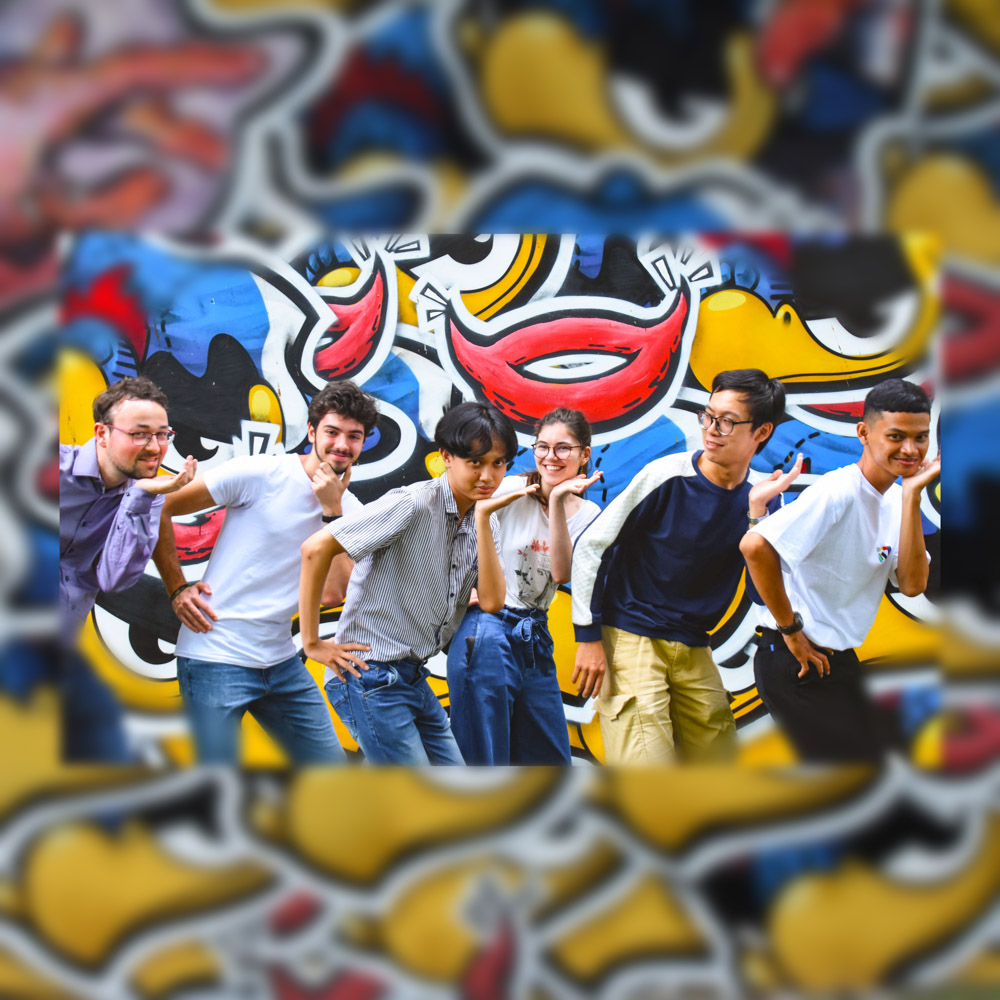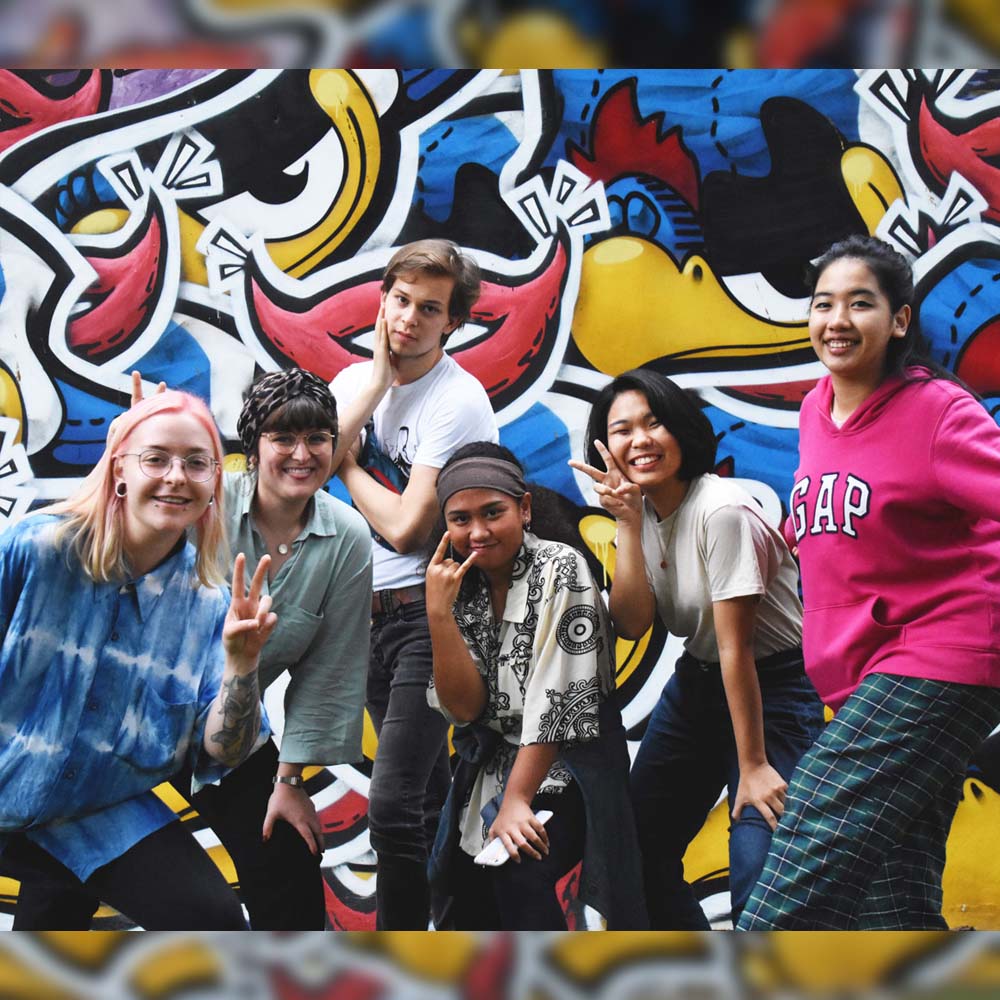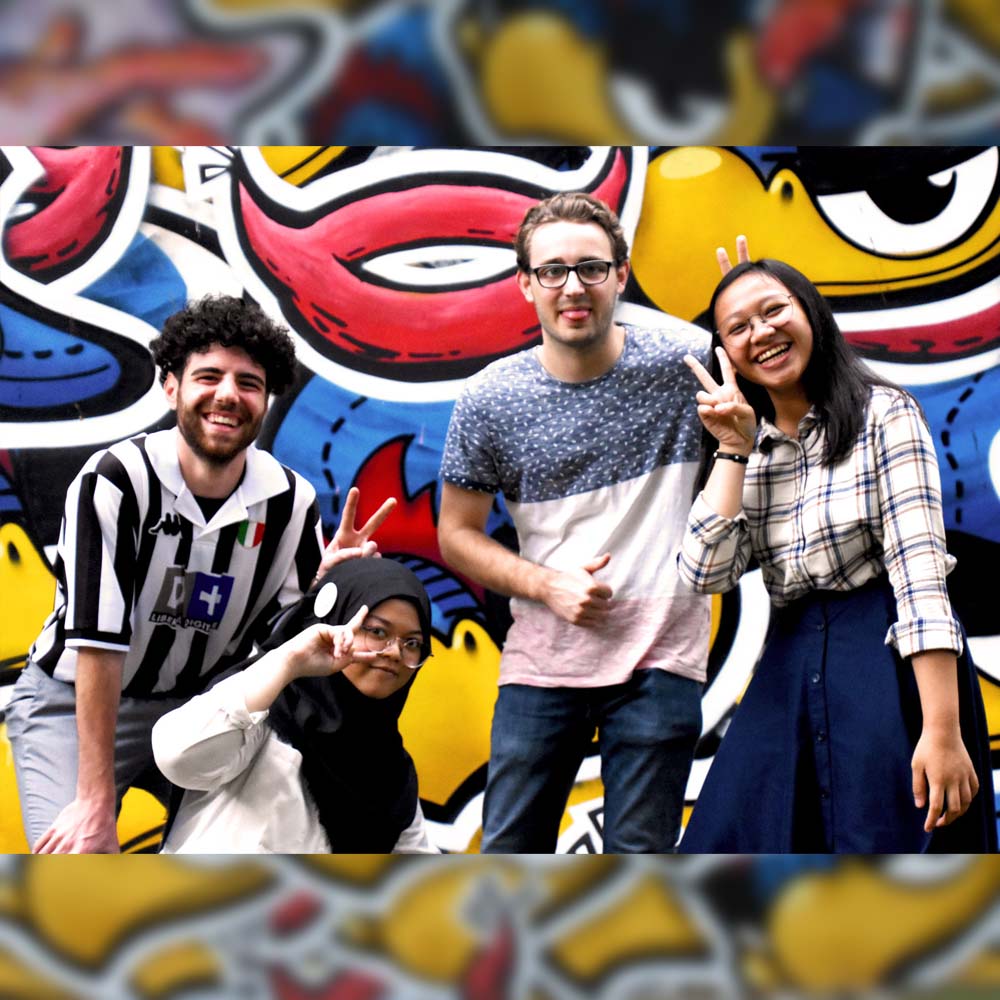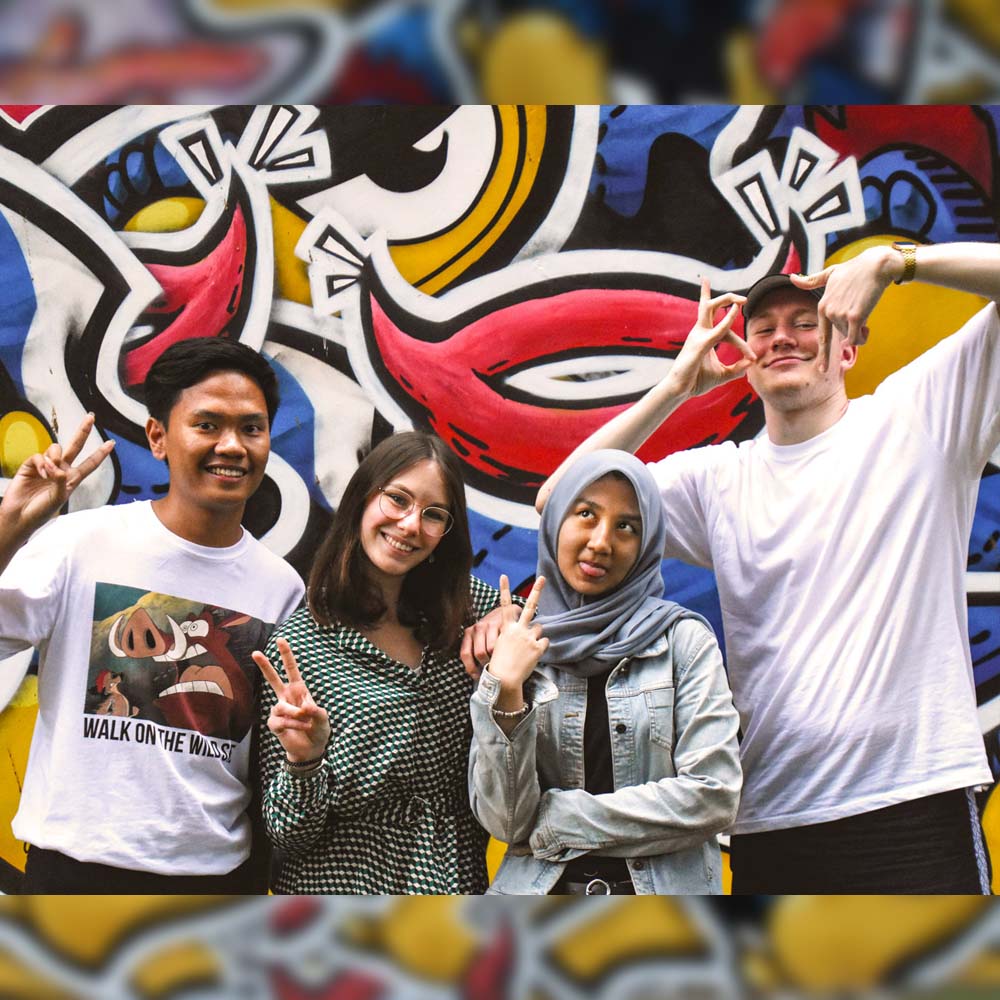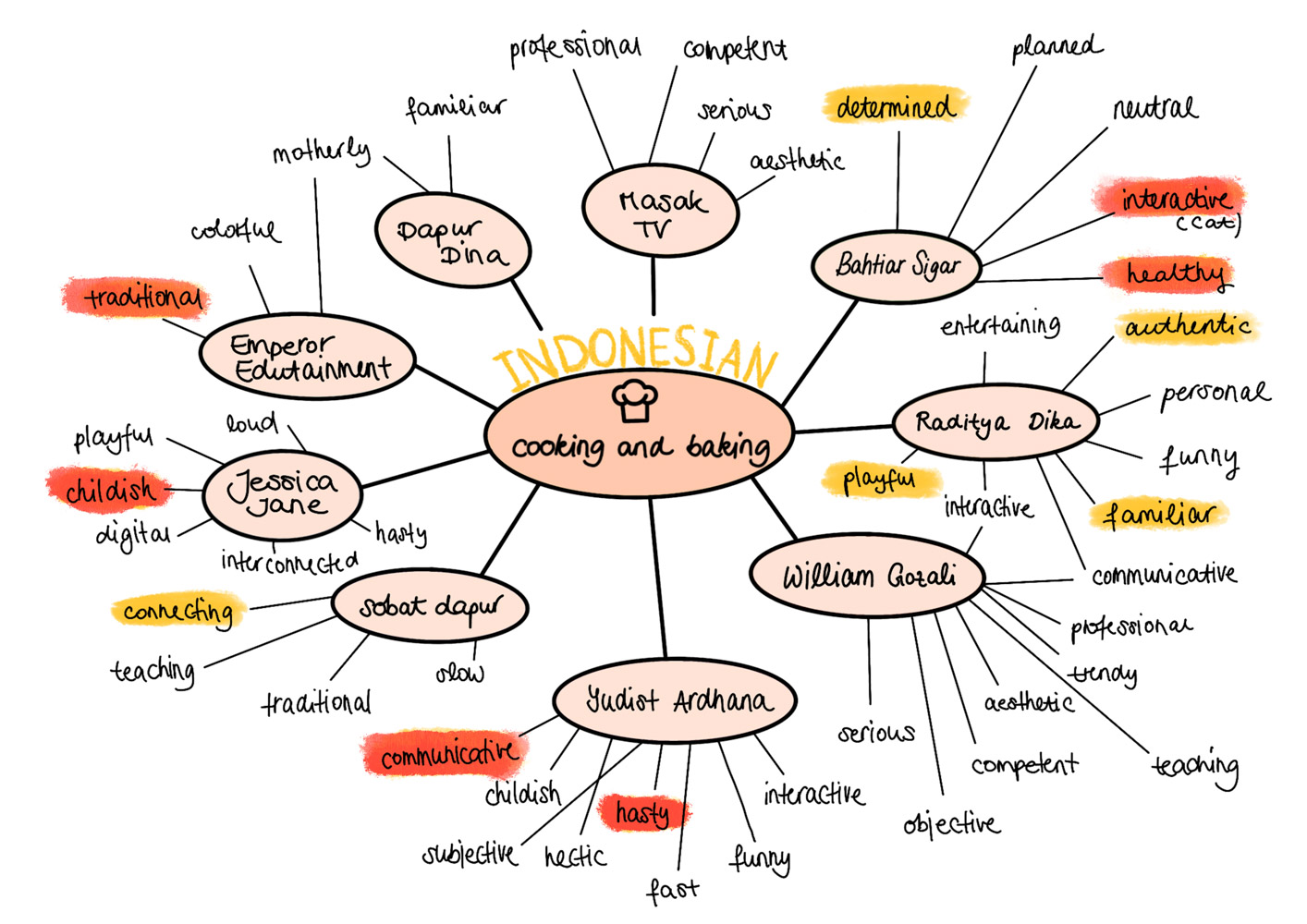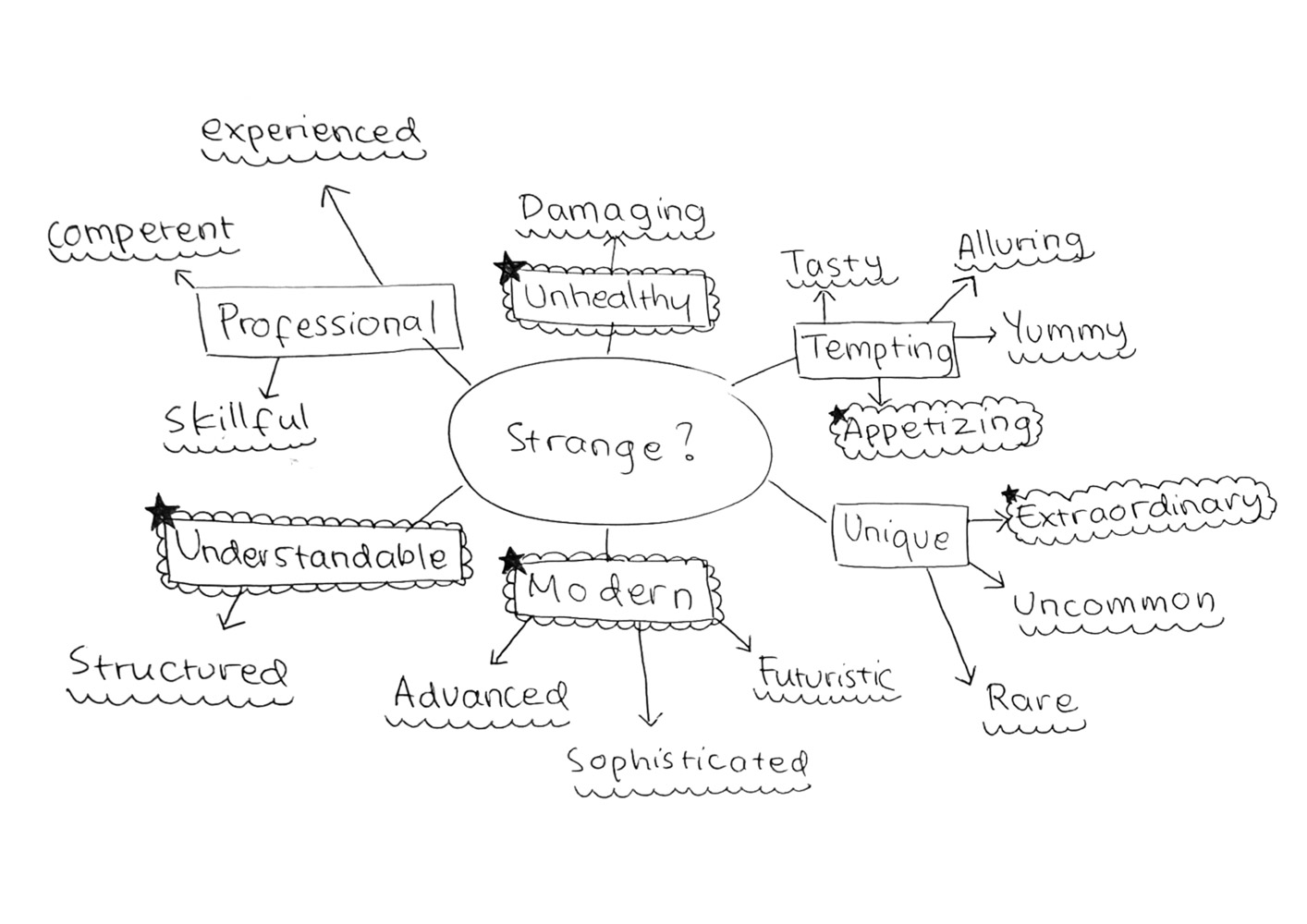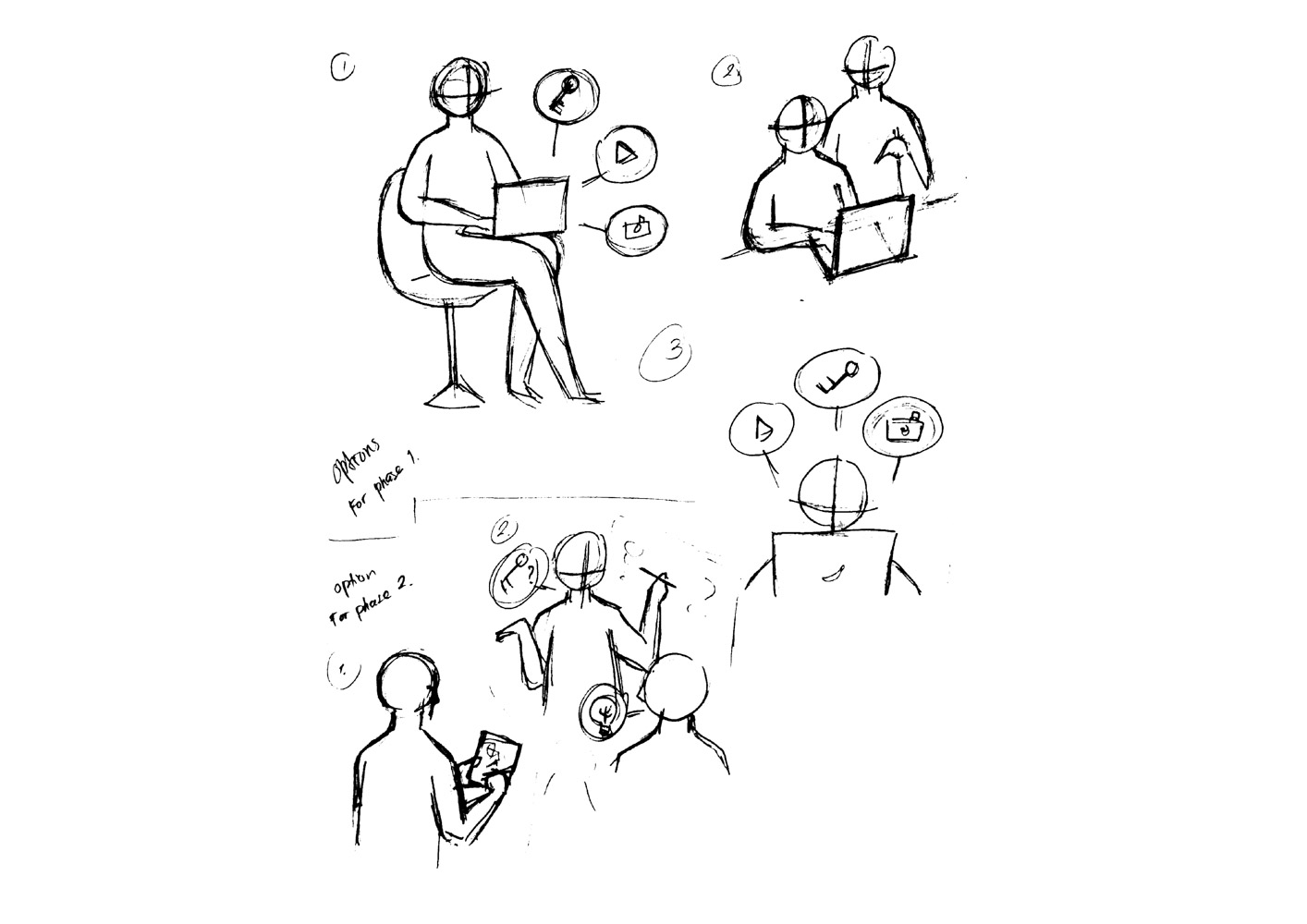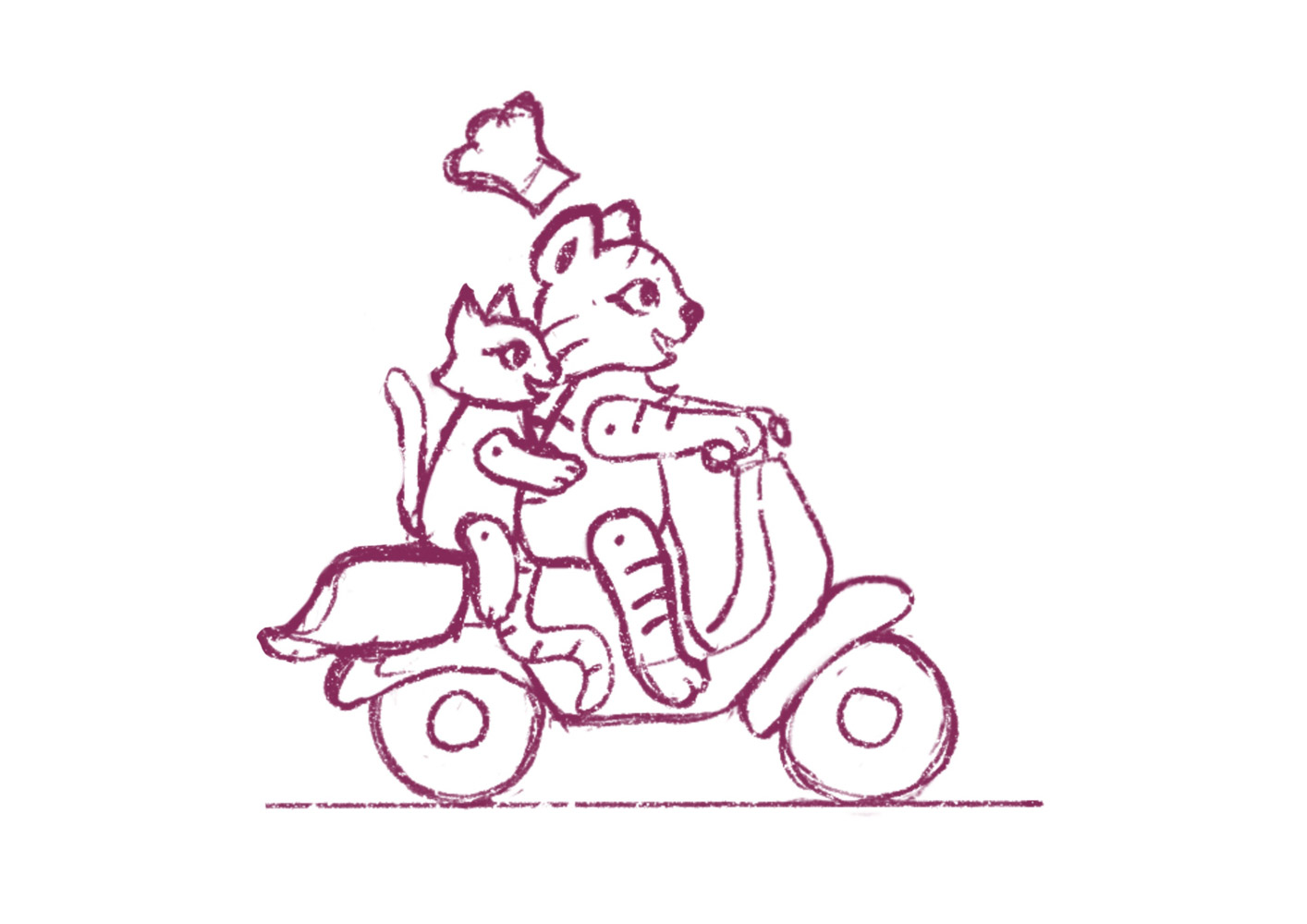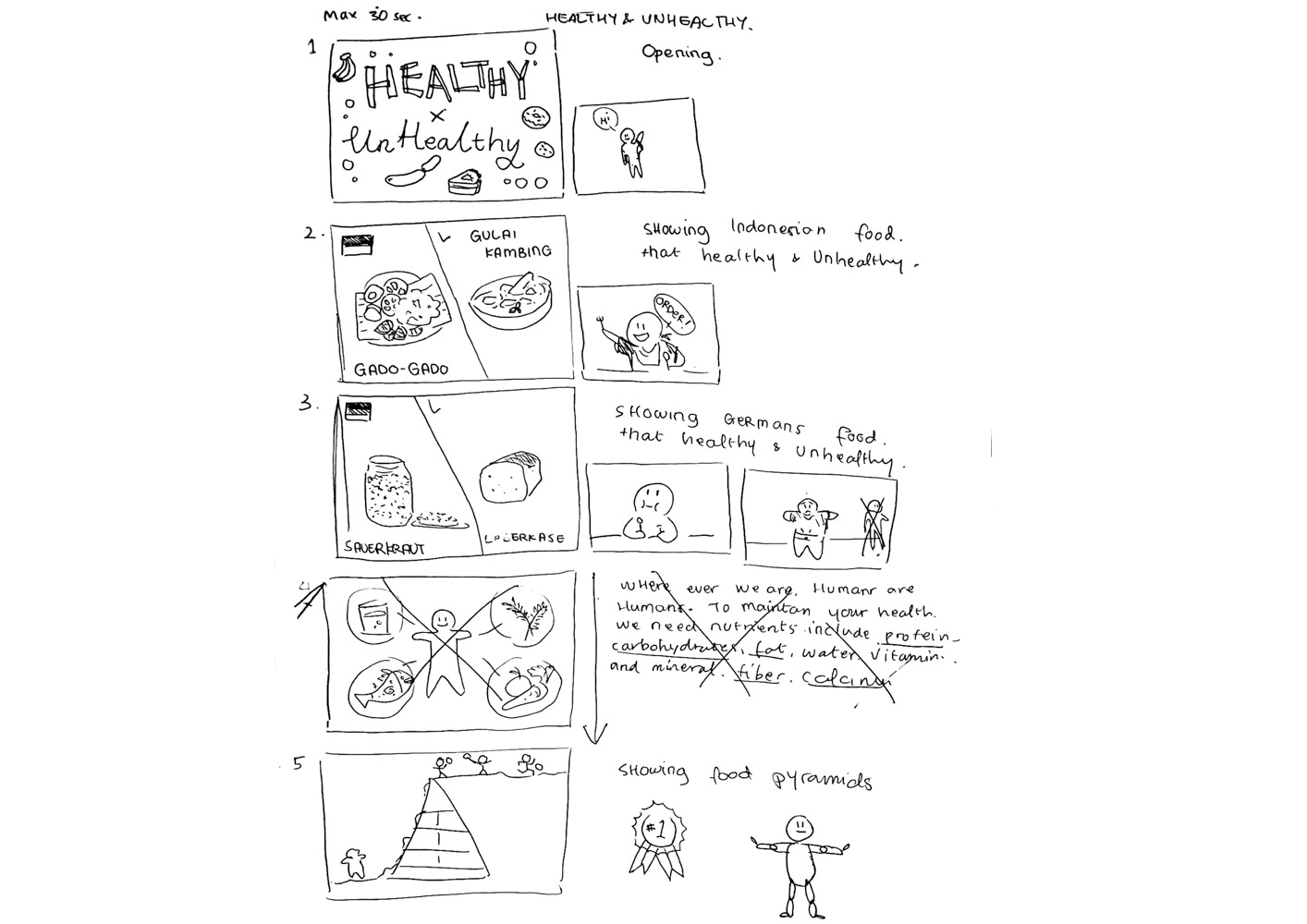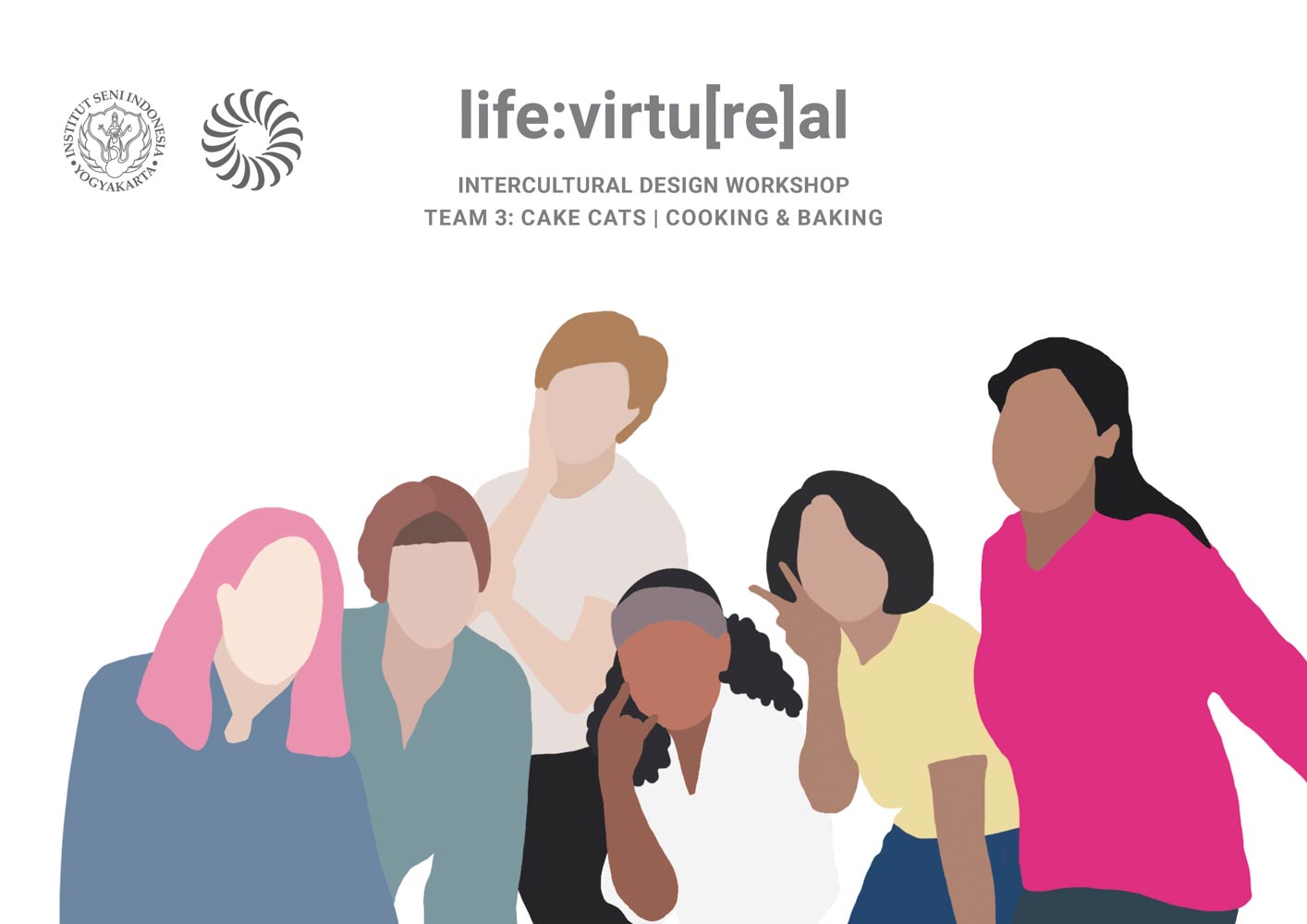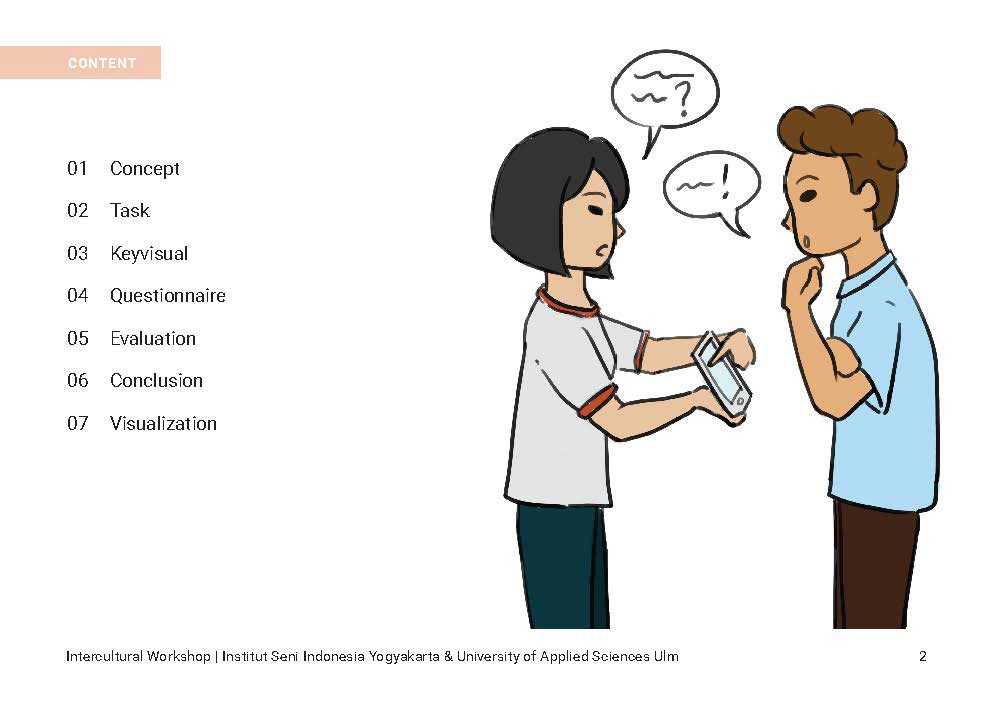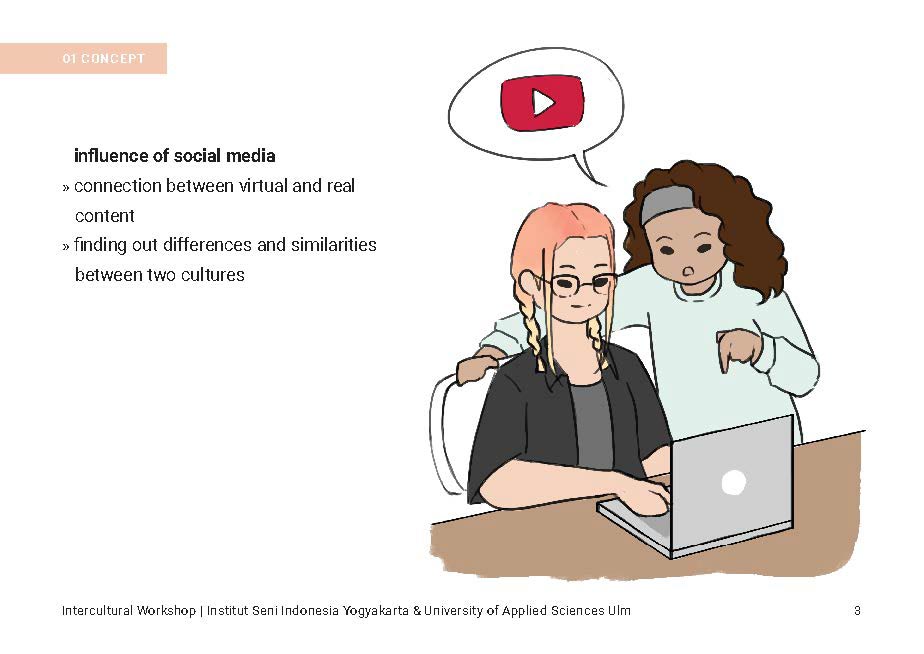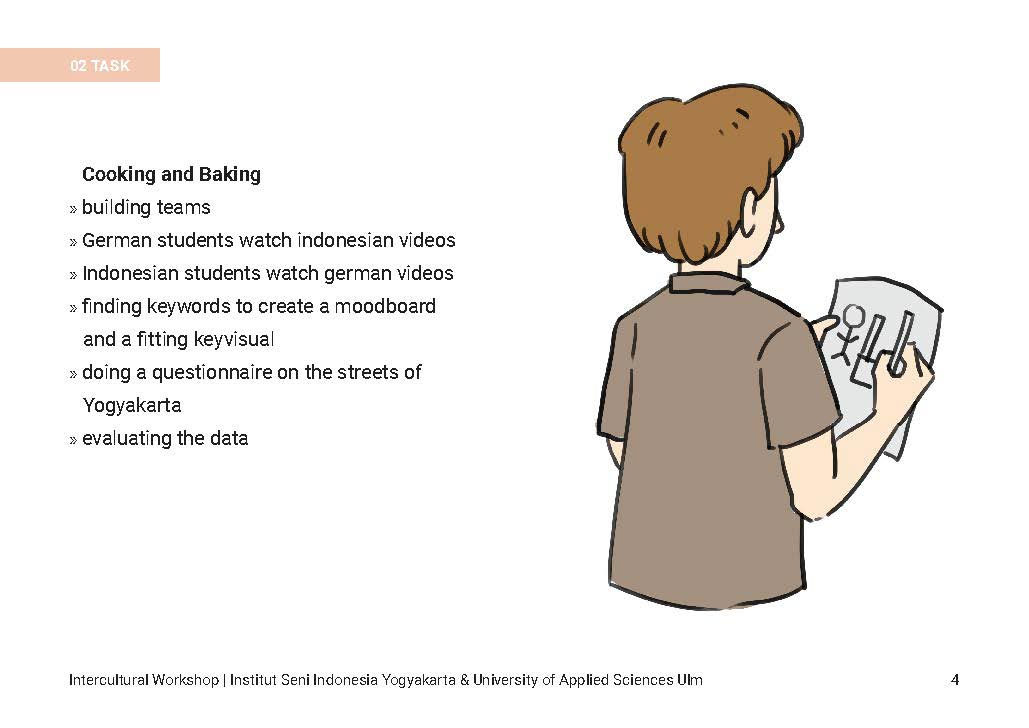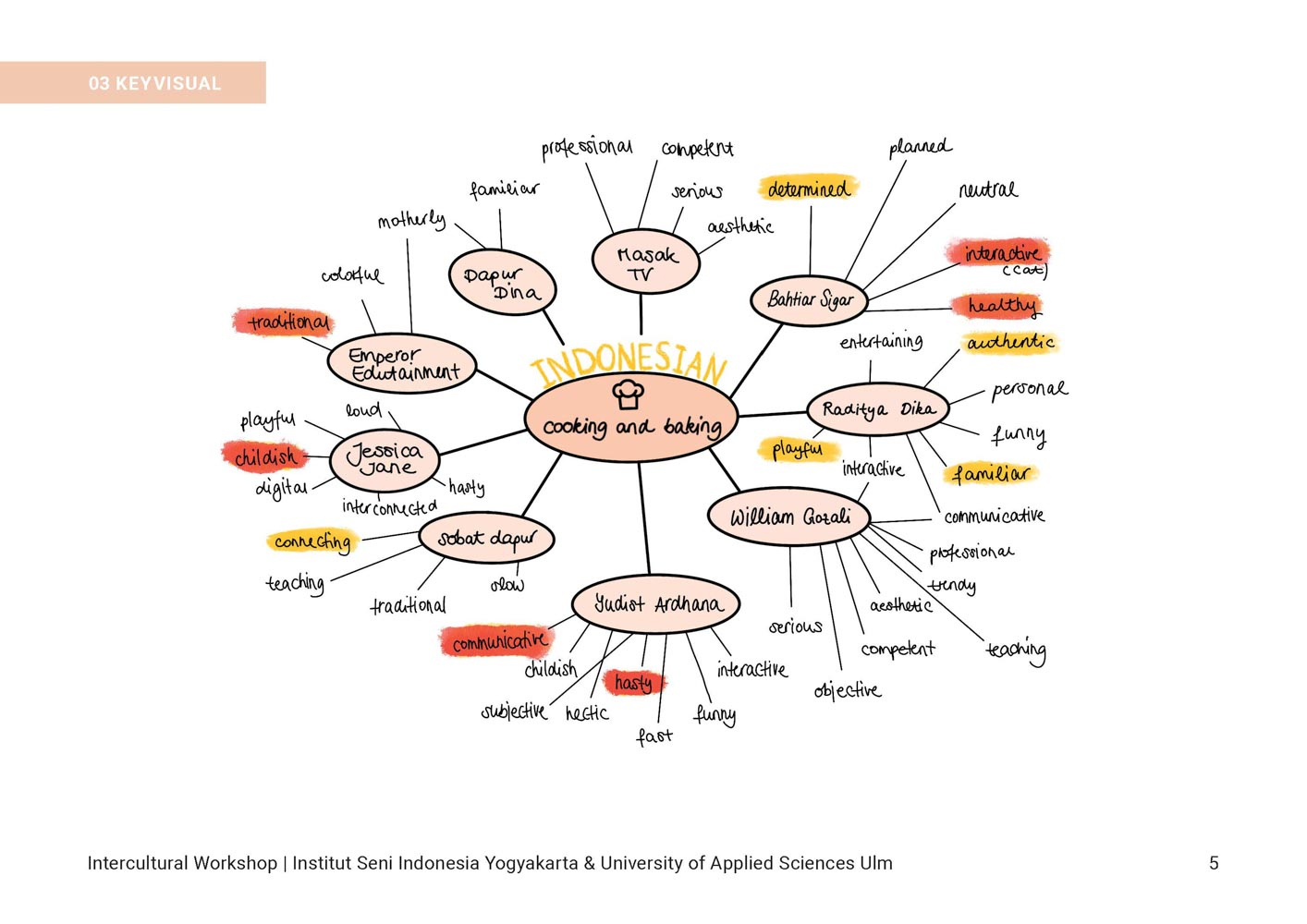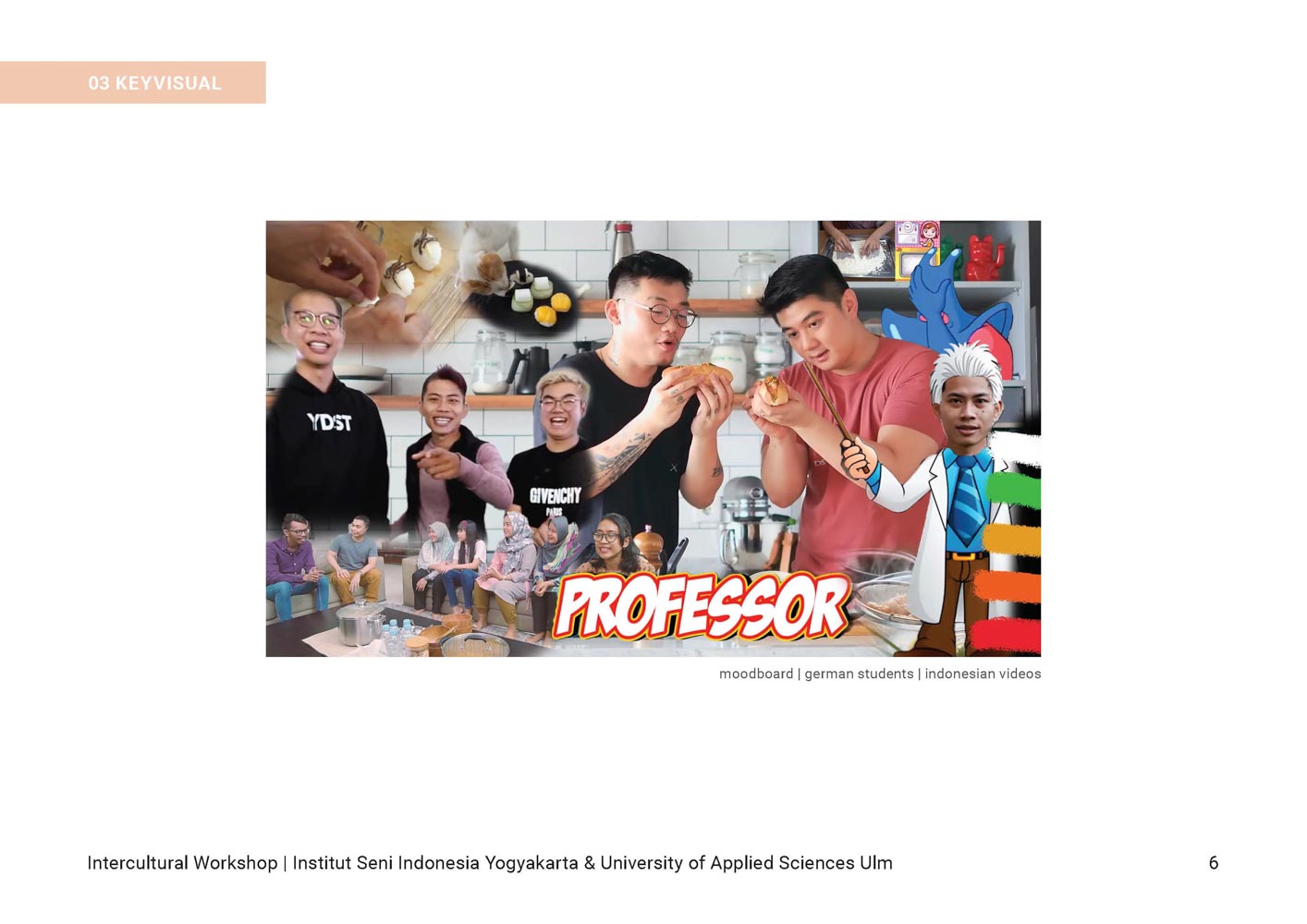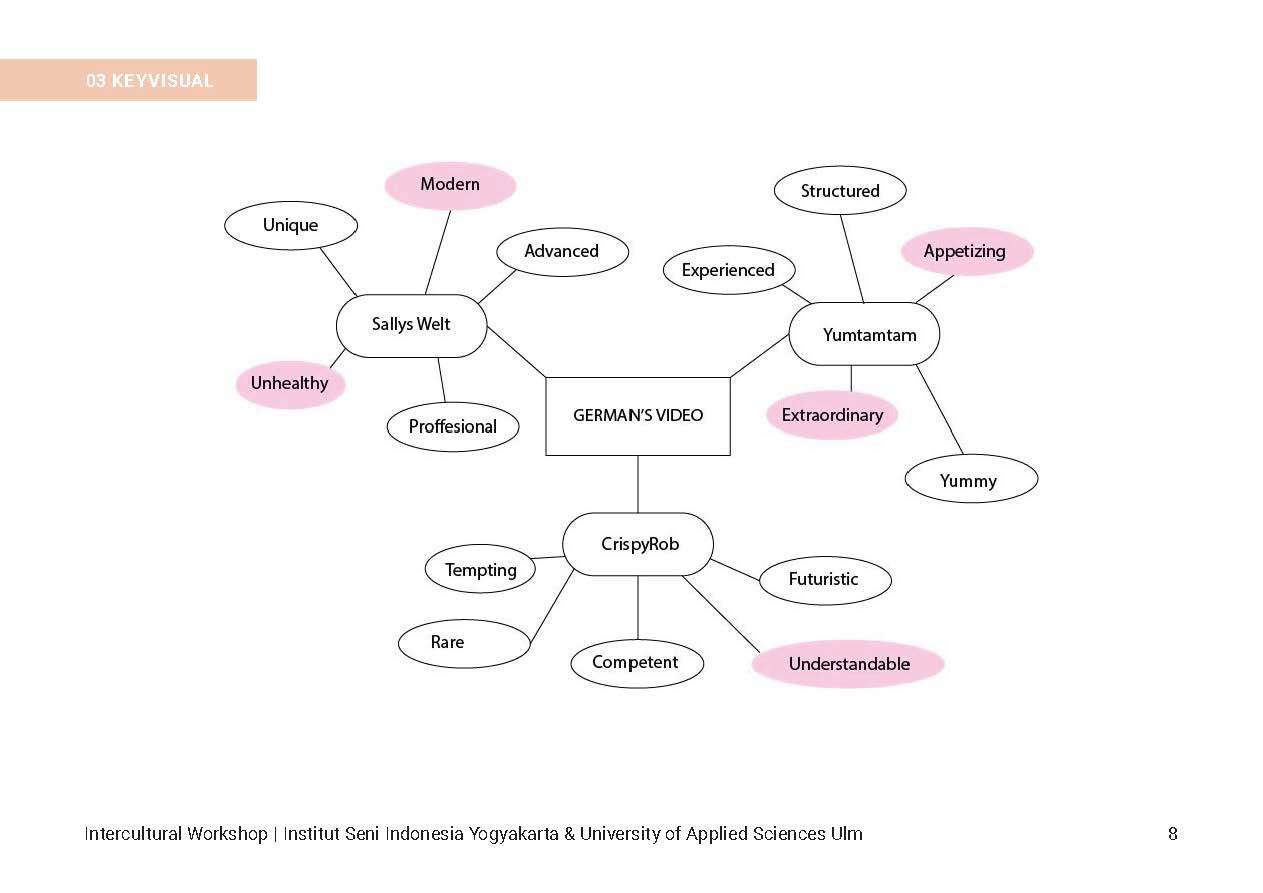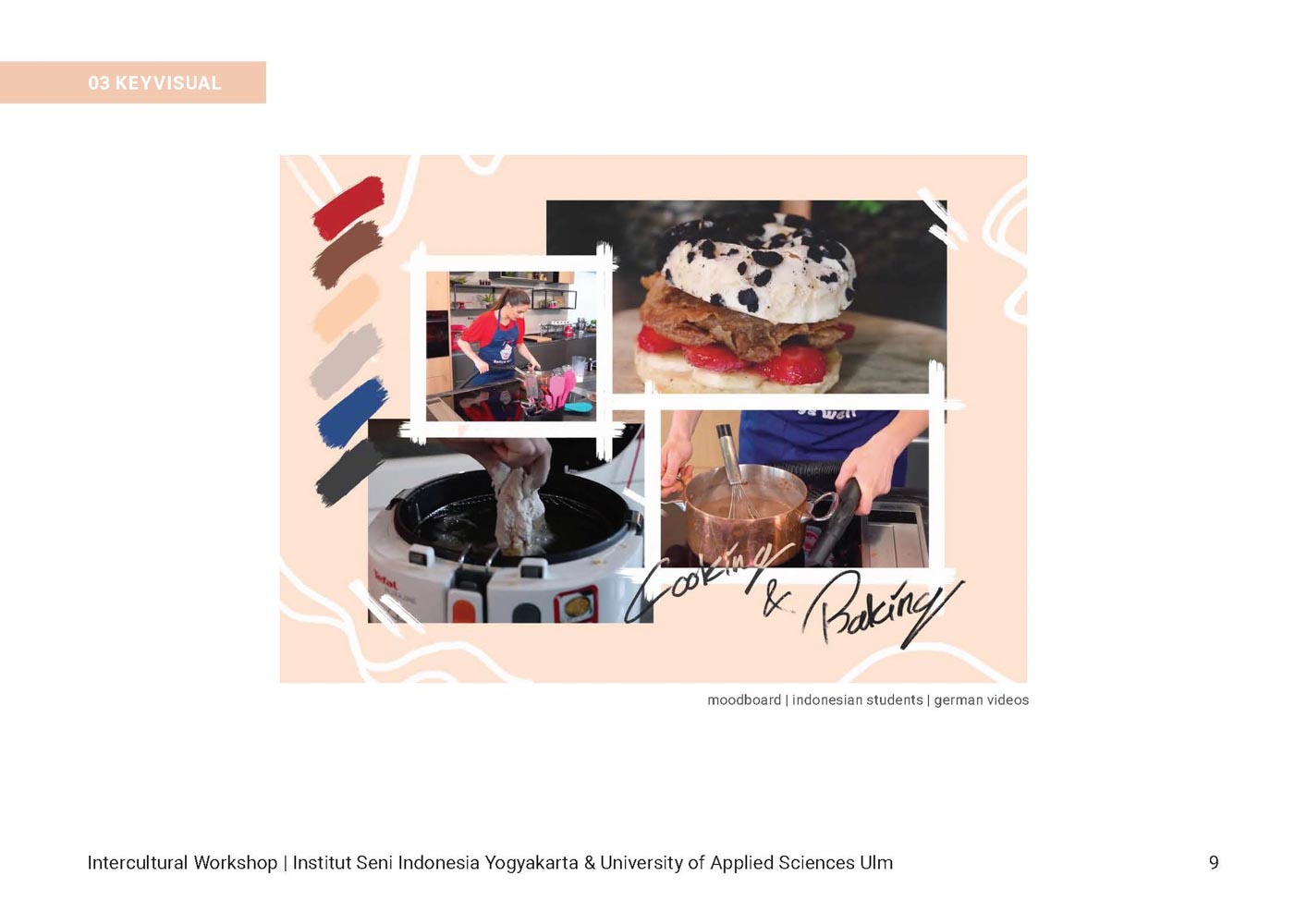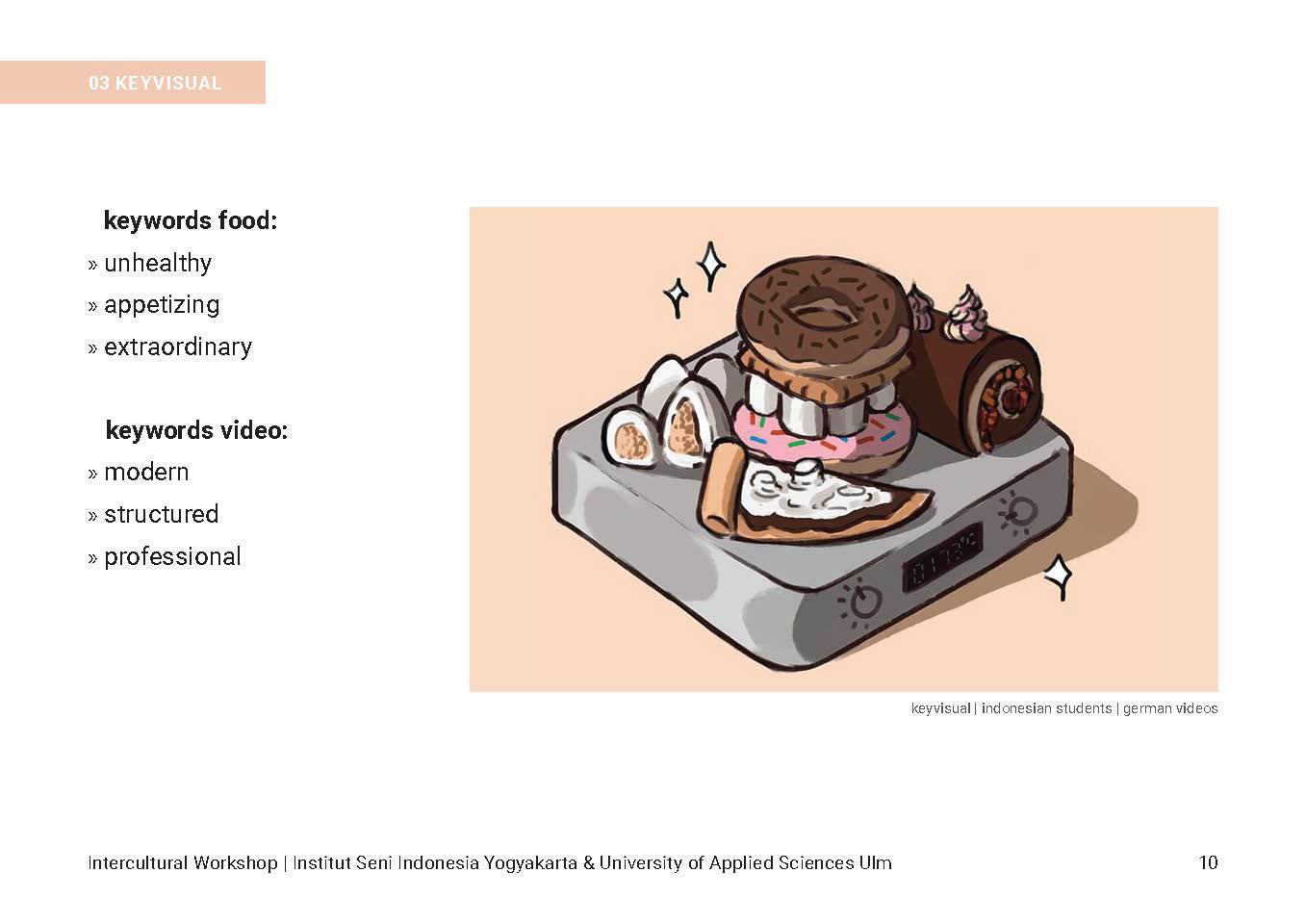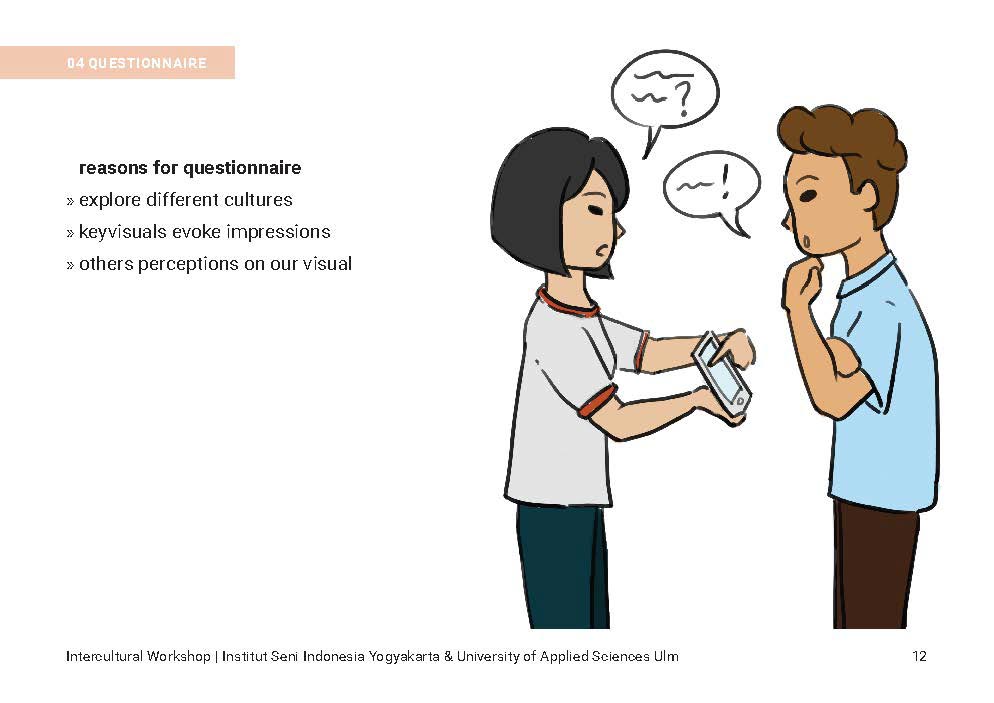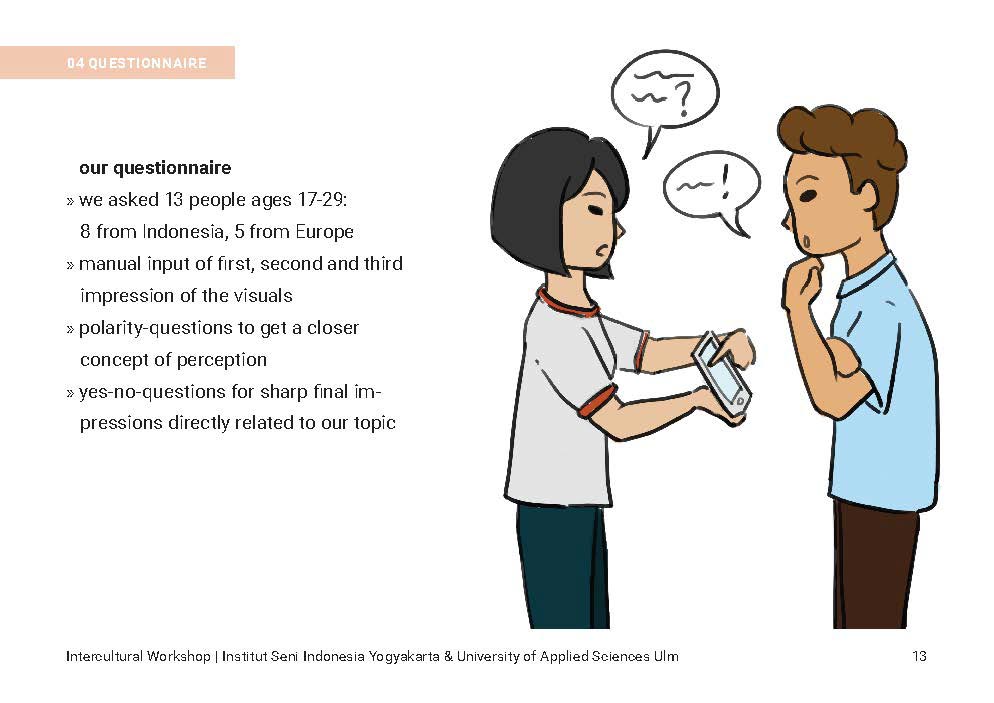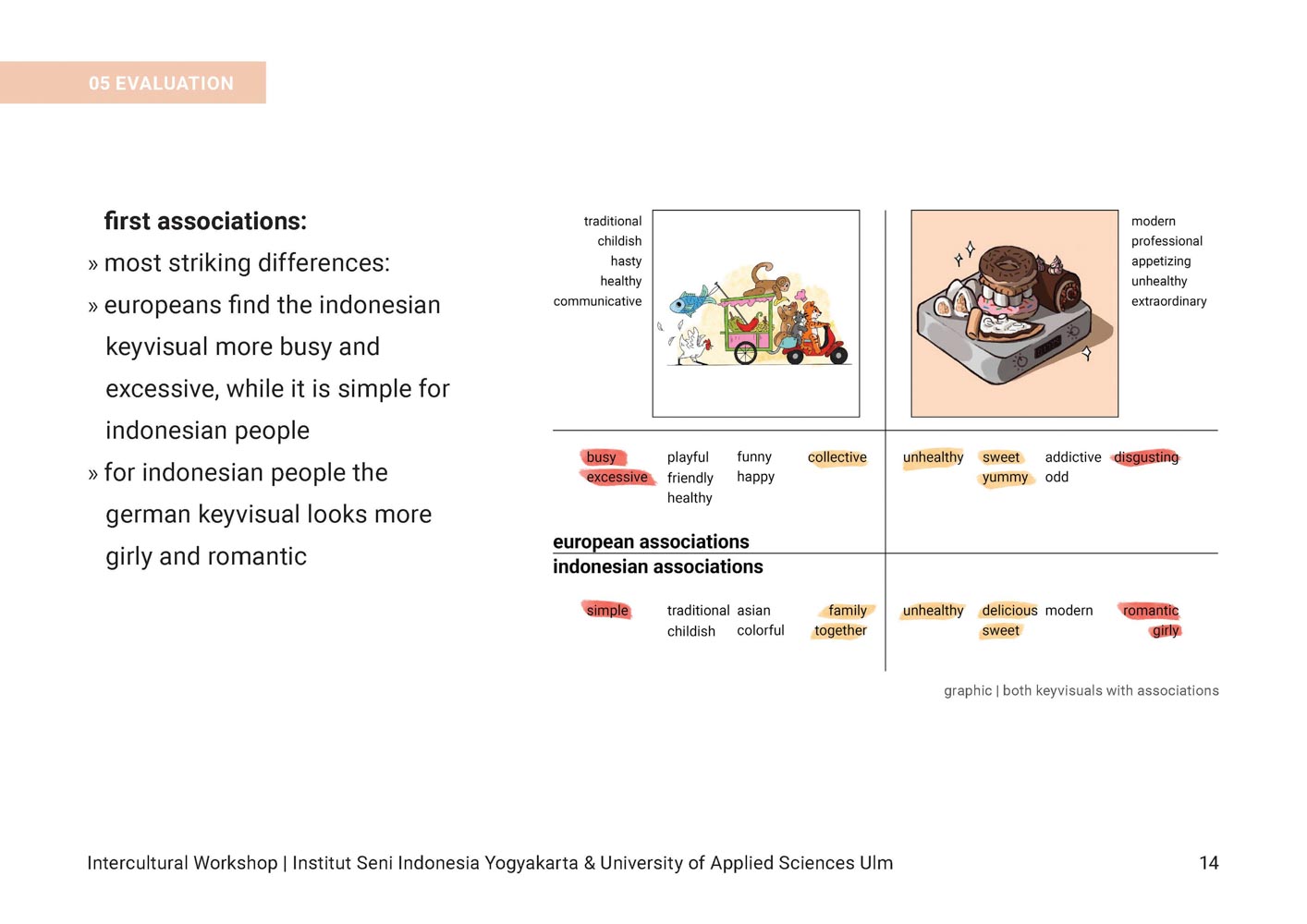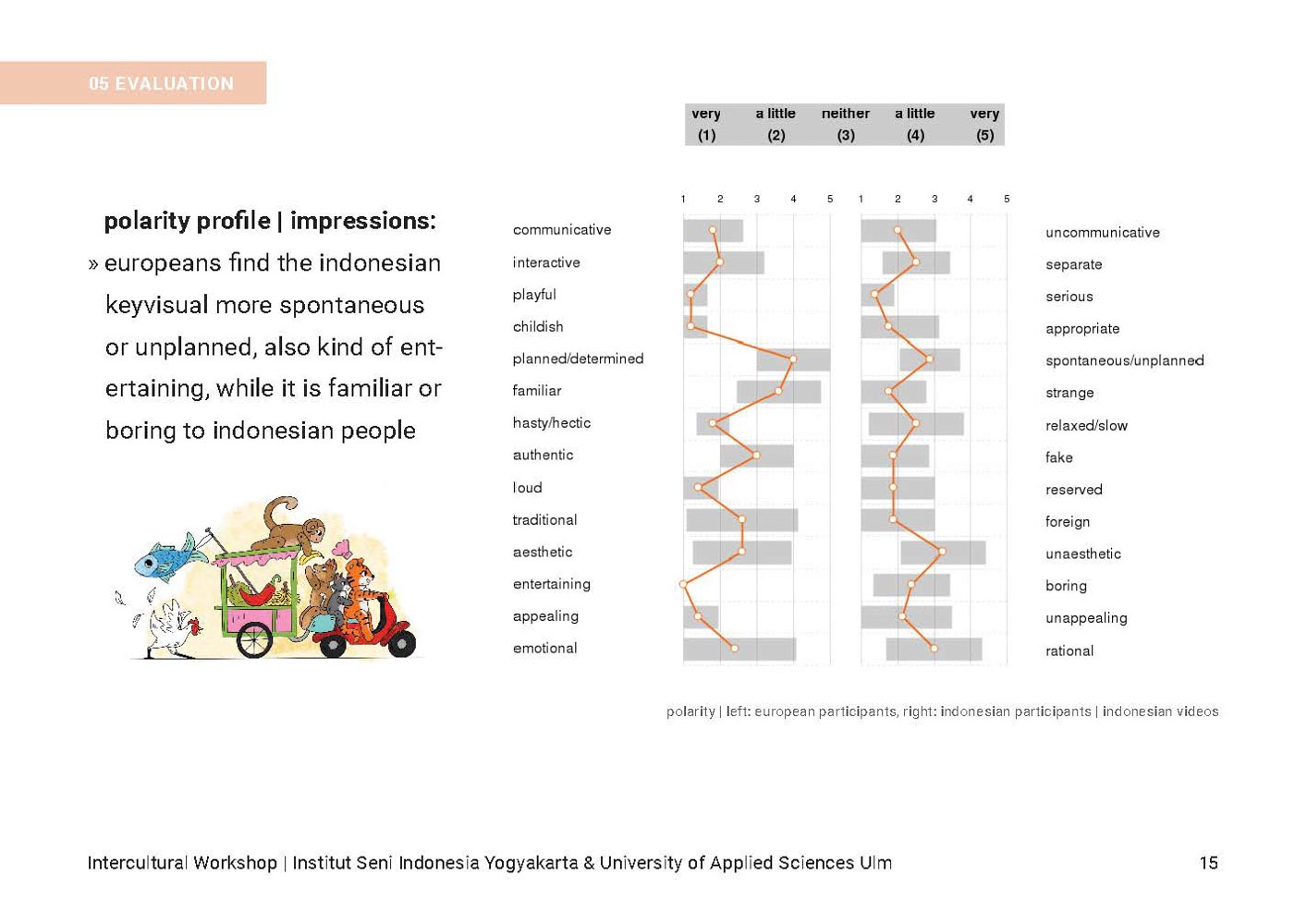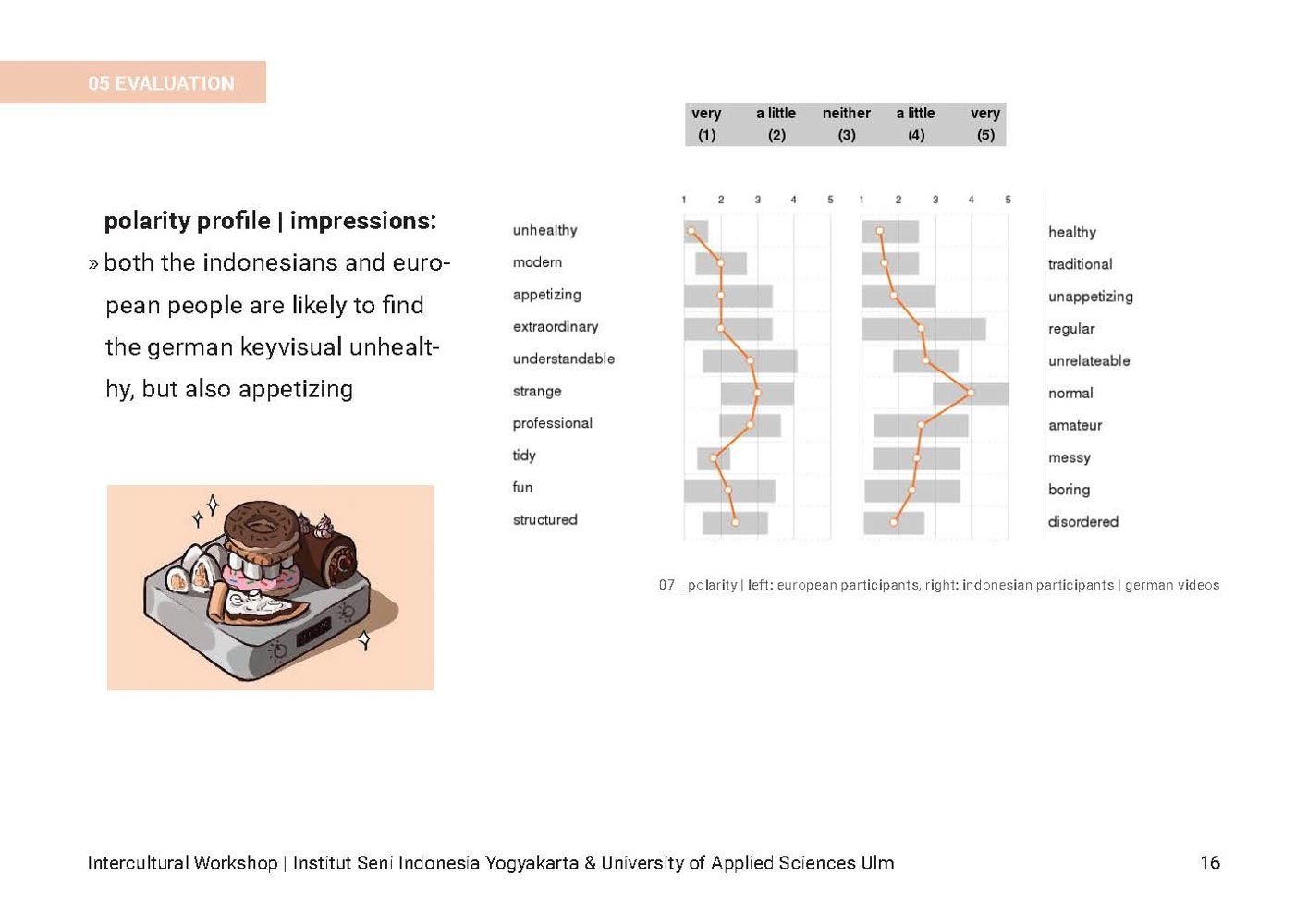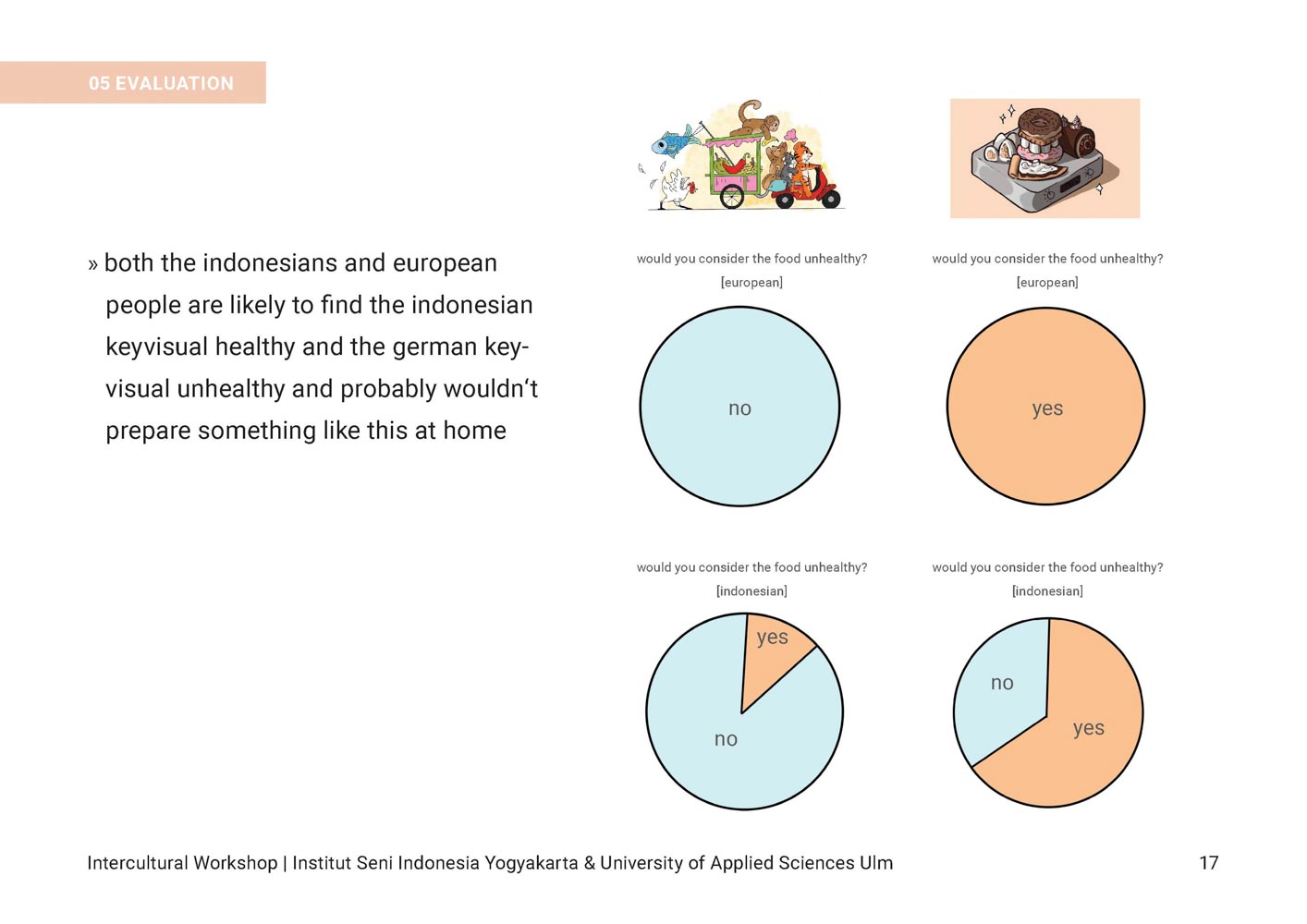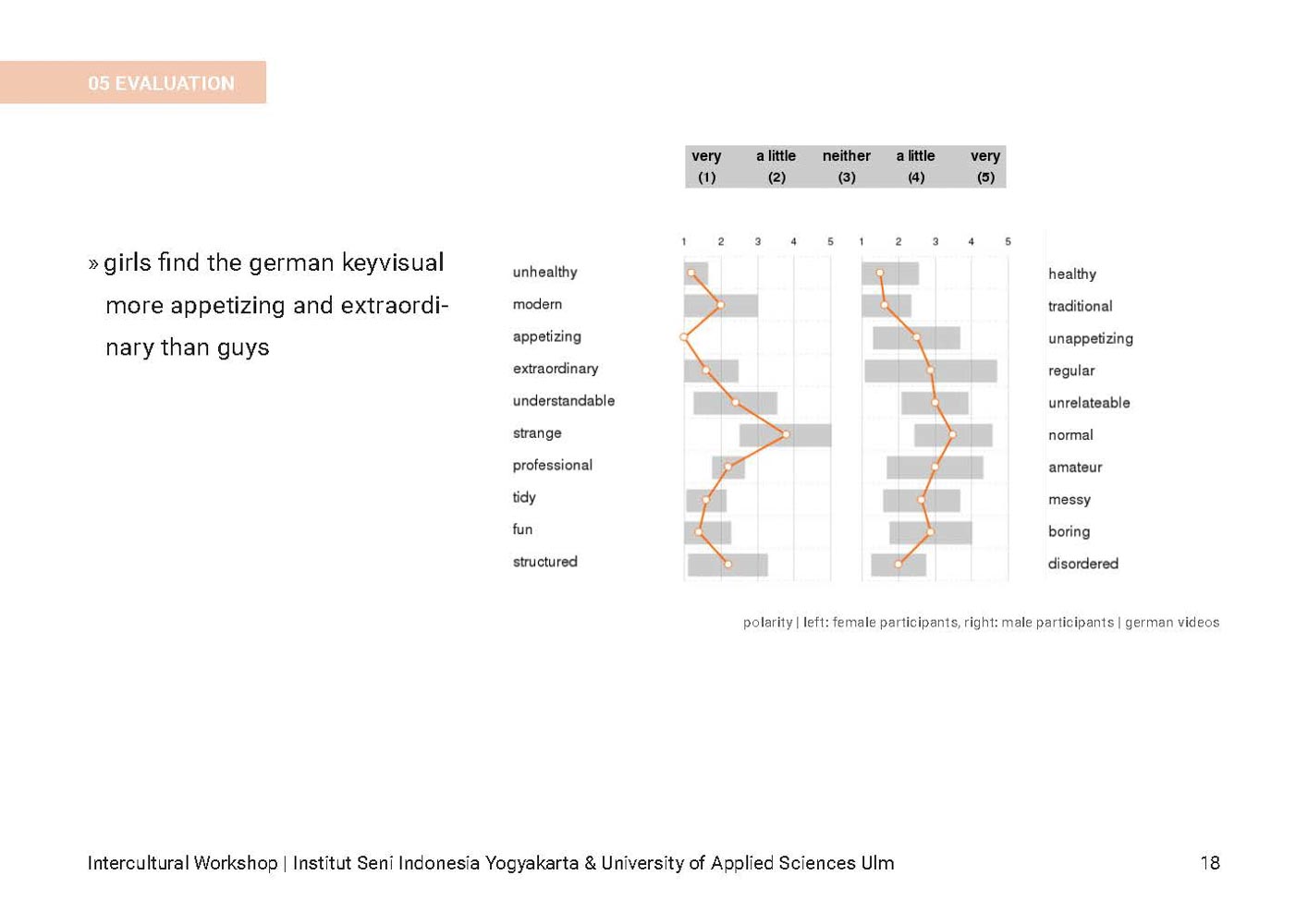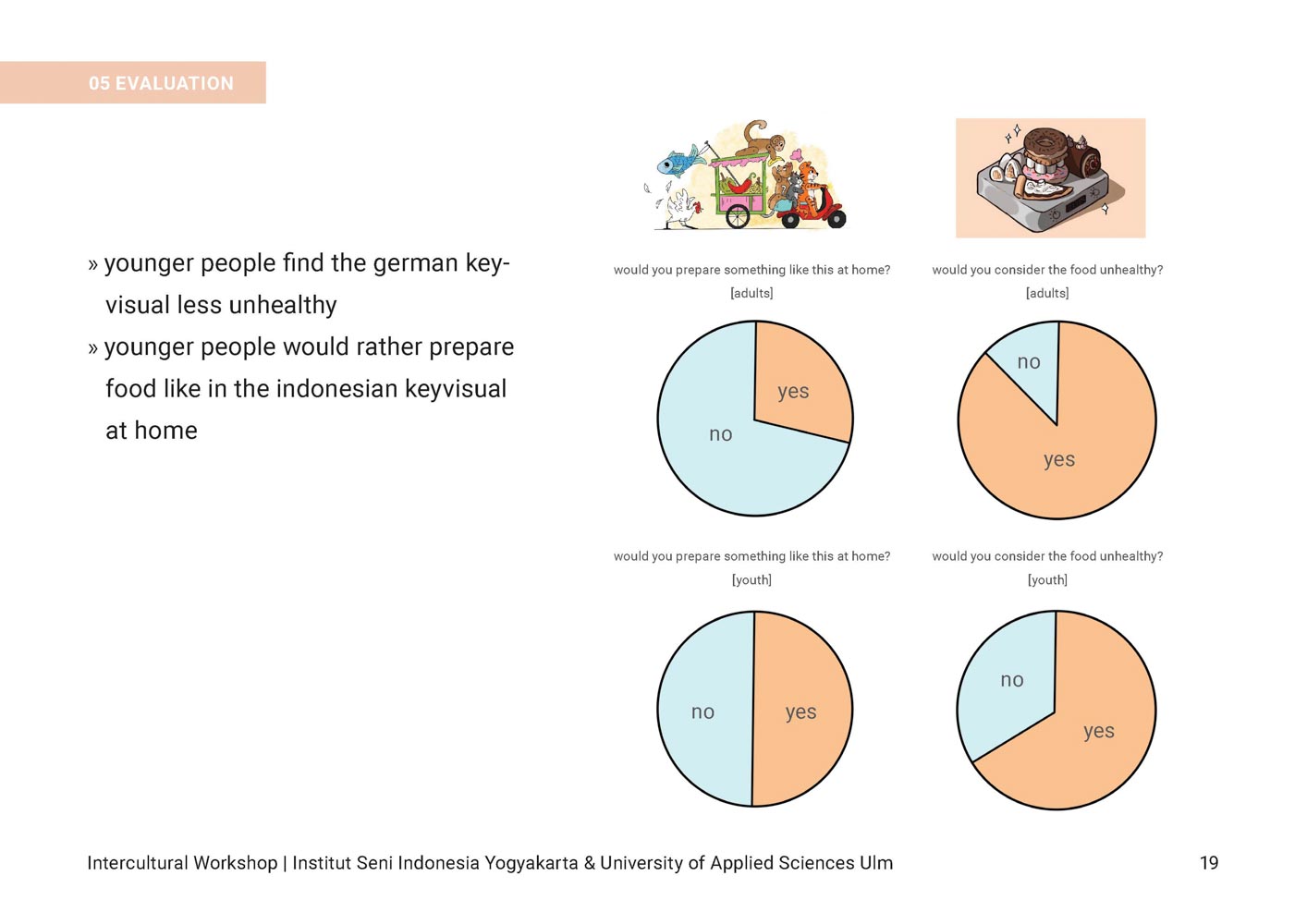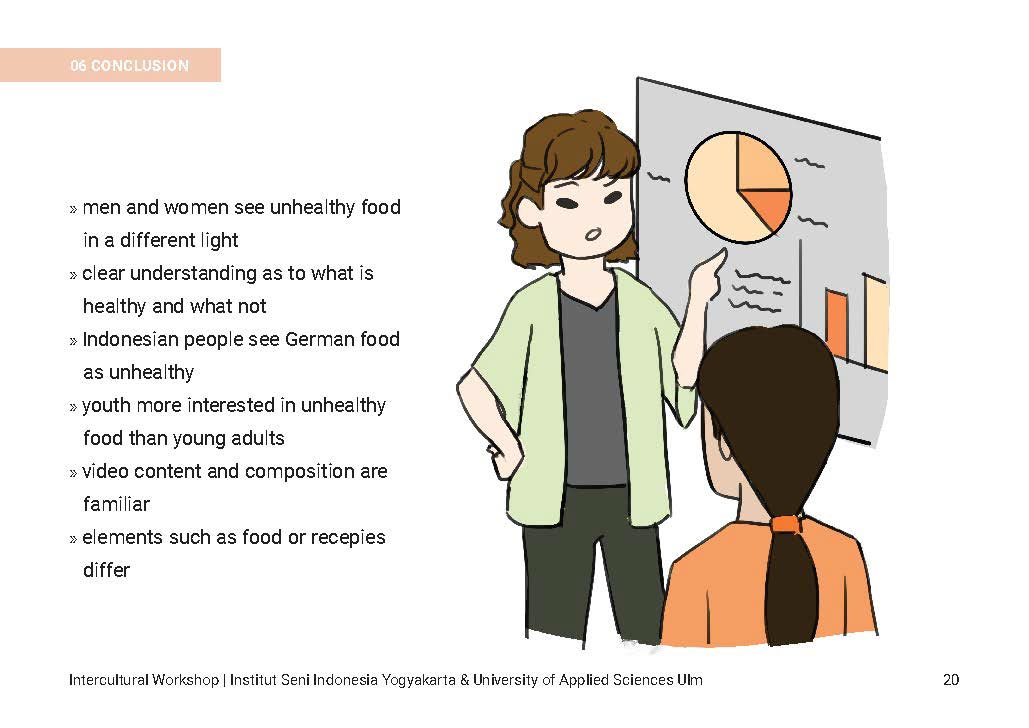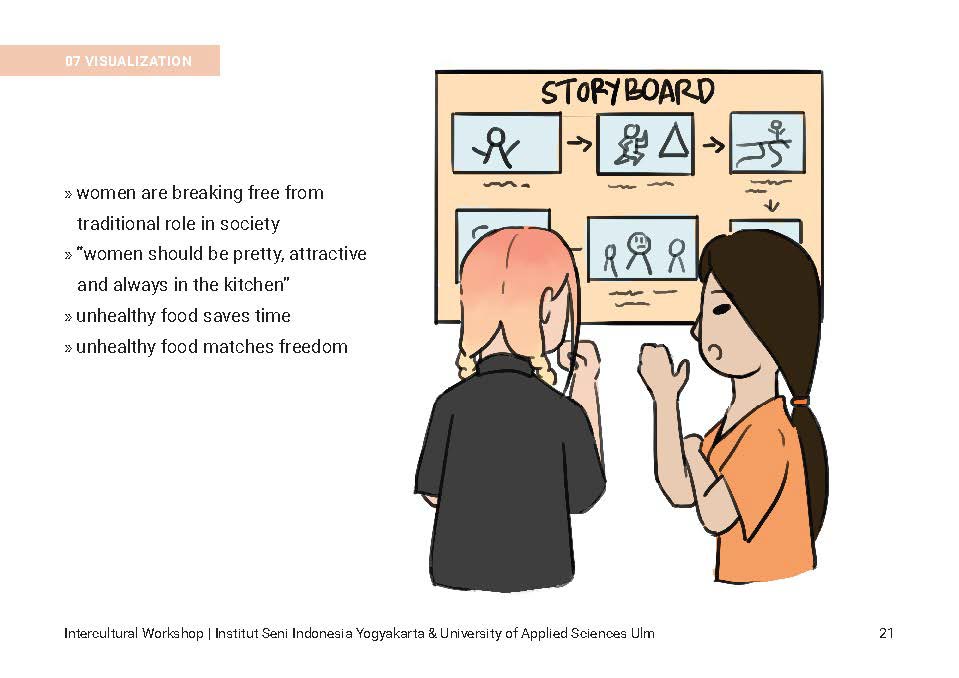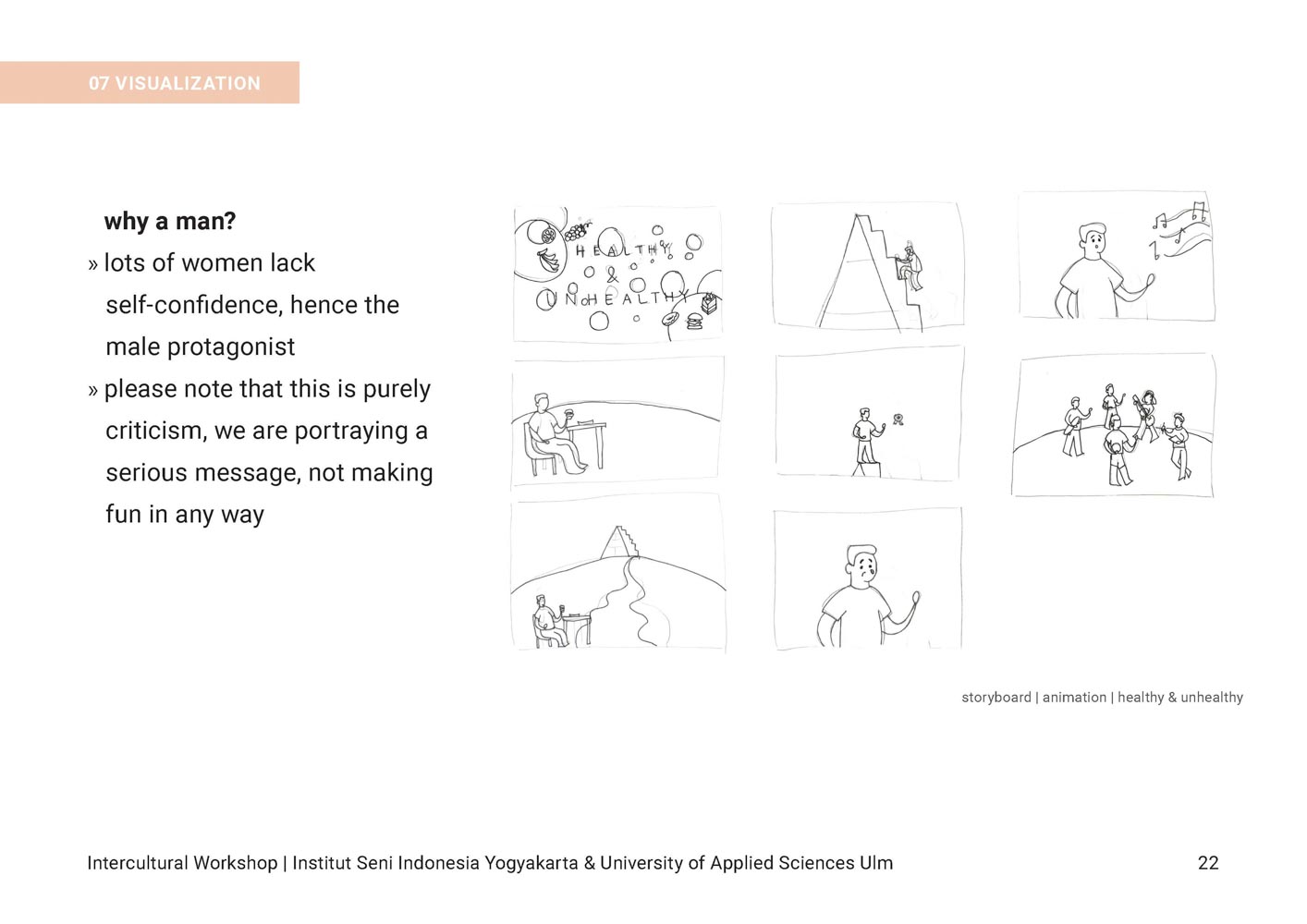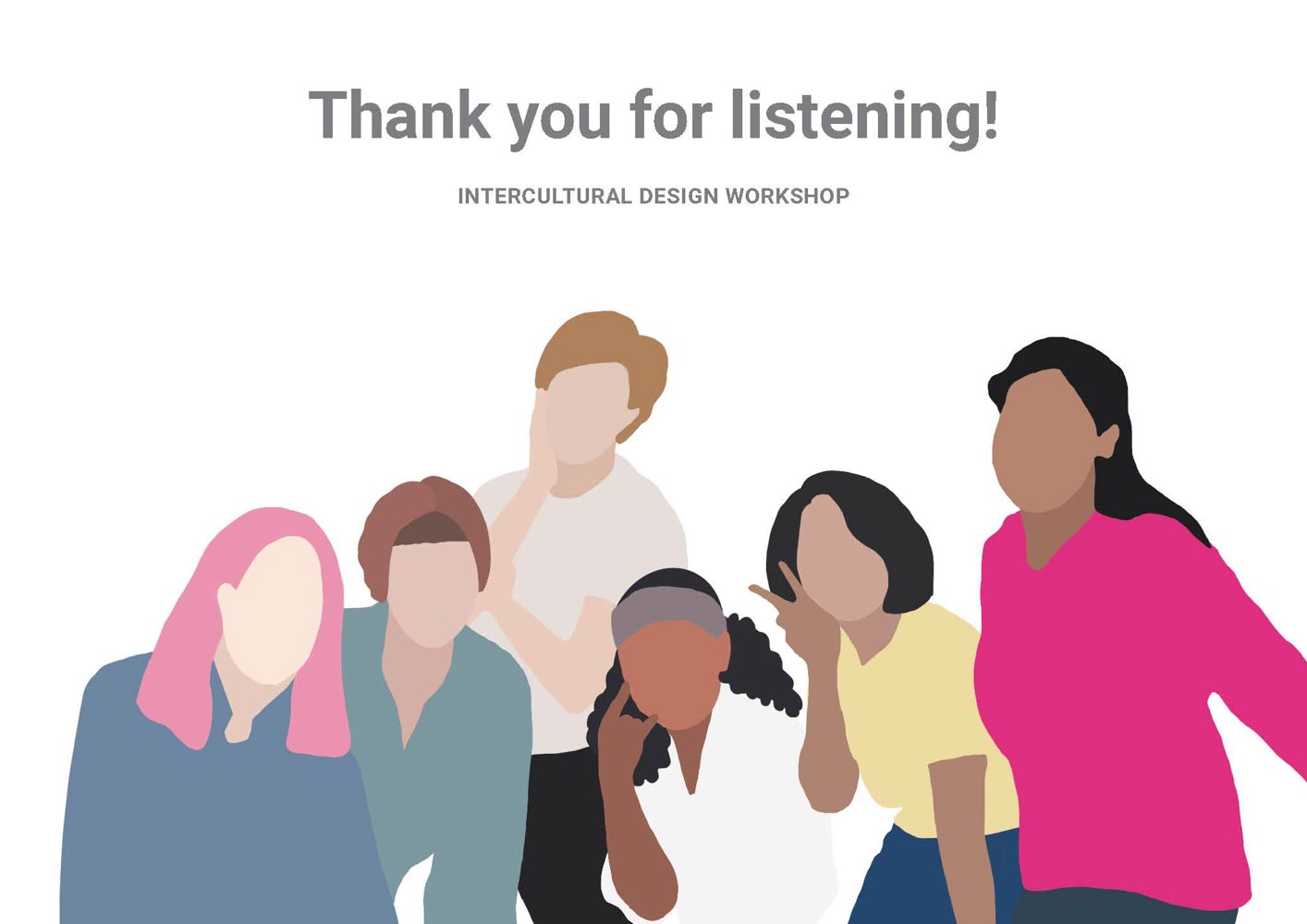1. Concept
The global internet usage and especially social media have become an essential part of everyday life for most of us. Being aware of the huge penetration of social media in both of our societies raises the question to what degree does social media influence our culture, behavior, and perception? People can be influenced on a greater scale supported by media technology. Images and videos outrun the written word with the consumer. German students and Indonesian students teamed up to find out more about the connection between virtual and real conception of cooking and baking content on the internet. We have two sides of the same coin. German students watch Indonesian content and Indonesians the German content. That way we can identify interesting, new and even unexpected revelations about other peoples’ cooking-culture. We are trying to find out where the differences lie and where we behave similarly. Can we learn something from other cultures even in the quick time of the internet?
In an effort to connect two different cultures, we are using cooking and baking videos from YouTube to find out how our uses in media differ in the age of the internet. Besides more obvious differences, like food-content and food-style, we will also work on less obvious differences, such as healthfulness and video-pacing. The central point that we are working around describes how differently we perceive these videos. It turns out that the internet is significantly less cultured than other mediums, such as TV or print. Trends travel faster and are anticipated more effectively. But there are still differences in these cooking and baking videos from different parts of the world, less in the videography and more in the content itself. People will be people, as we will demonstrate.
